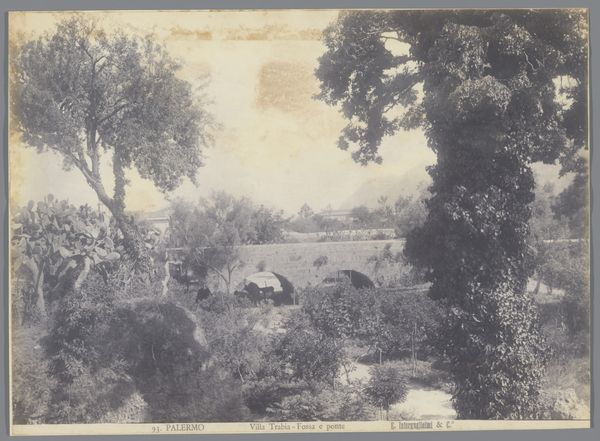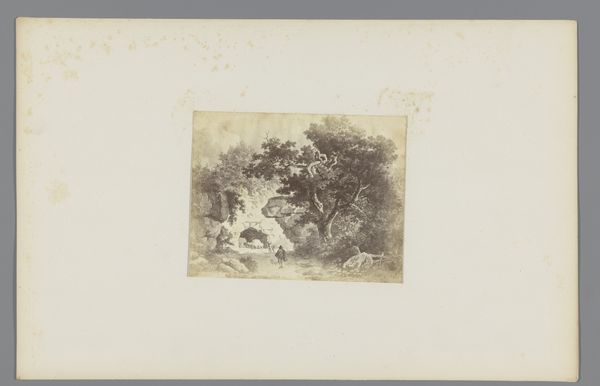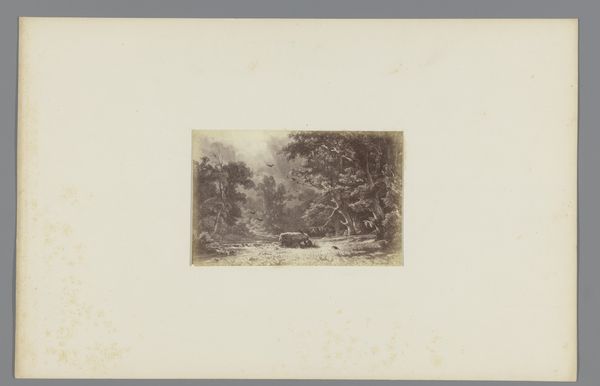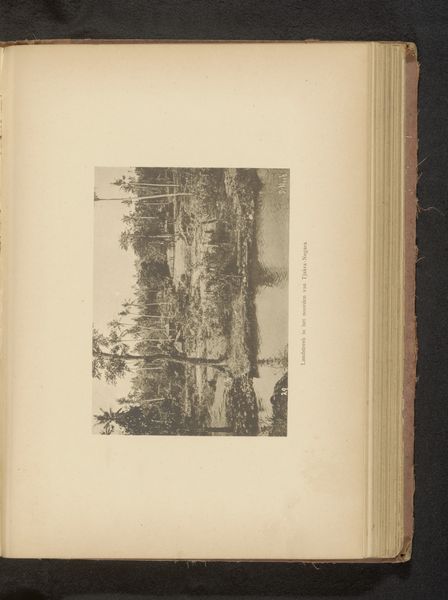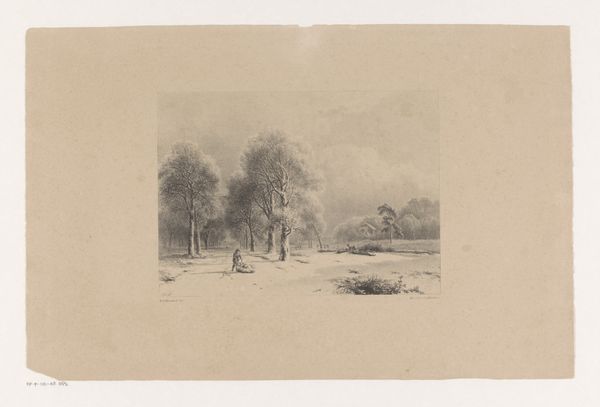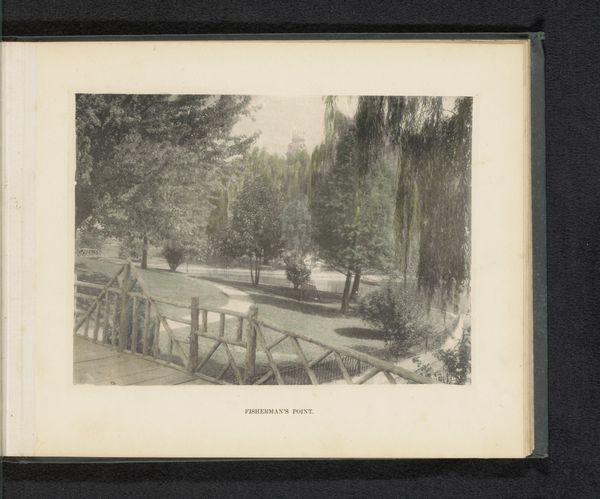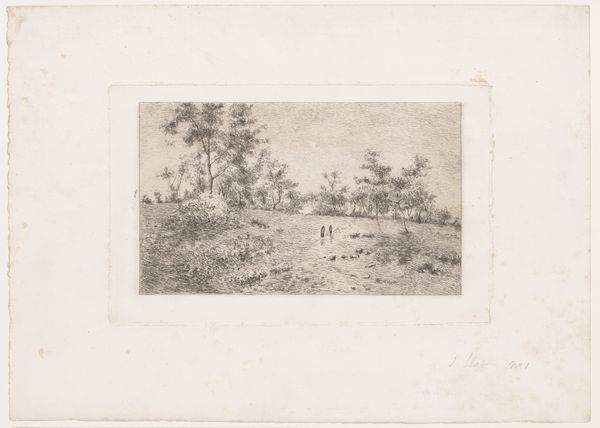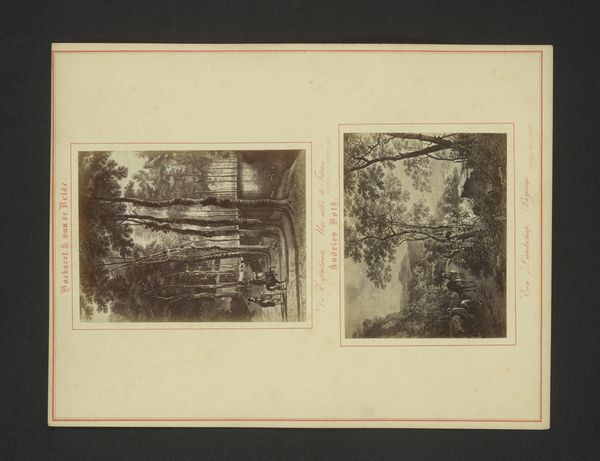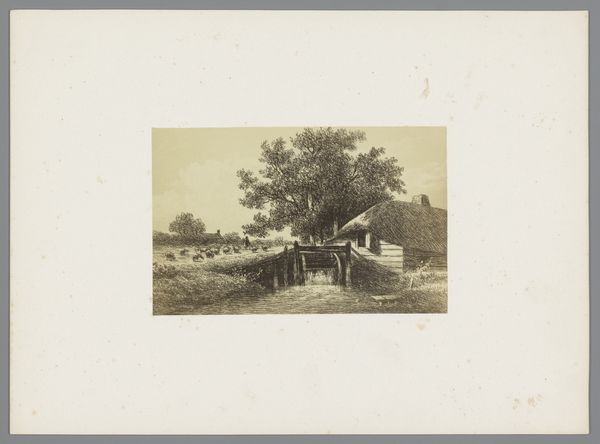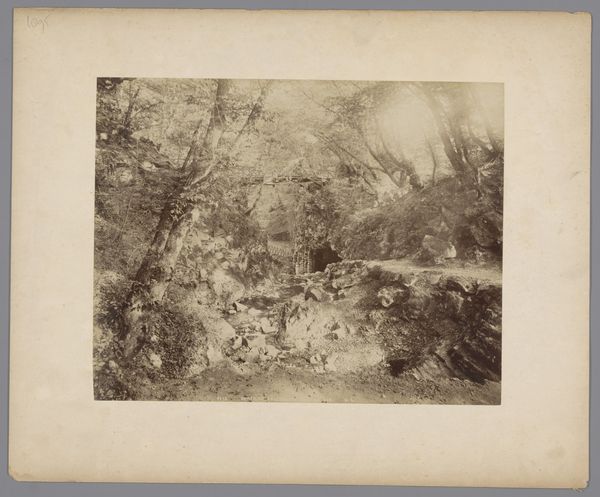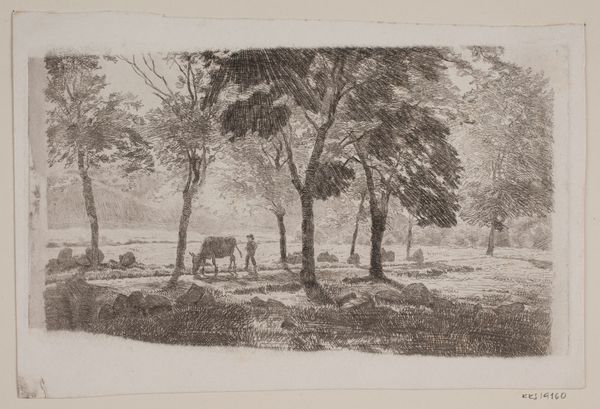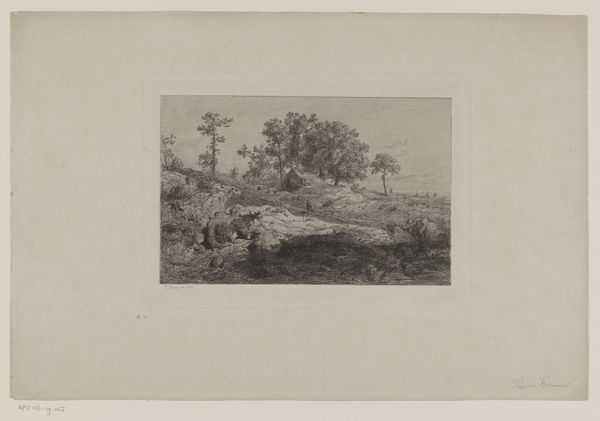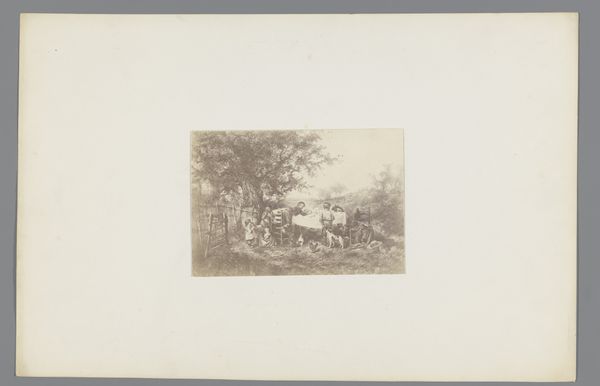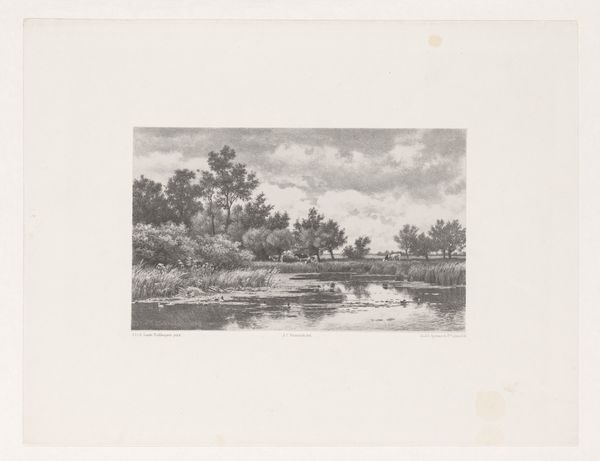
Gezicht op chrysanten in de tuin op het landgoed van George Gill Green in Woodbury before 1889
0:00
0:00
print, photography
#
garden
#
pictorialism
# print
#
landscape
#
flower
#
photography
#
watercolor
Dimensions: height 136 mm, width 189 mm
Copyright: Rijks Museum: Open Domain
Editor: Here we have a photographic print entitled “Gezicht op chrysanten in de tuin op het landgoed van George Gill Green in Woodbury,” made before 1889. I find its atmosphere really captivating. It feels like stepping back in time. What do you see in this piece? Curator: It's fascinating how photography, even in its early stages, was used to both document and construct a specific image of wealth and leisure. This isn’t just a snapshot; it’s a carefully composed representation of Green’s estate, reflecting his social standing. Notice the manicured garden. How do you think that resonated with the public at the time? Editor: I suppose it was a way of showcasing status, a visual declaration of prosperity during the late 19th century. Did the medium of photography affect the way landscapes were perceived or presented? Curator: Absolutely. Photography offered a seemingly objective way to capture reality, yet, like any medium, it’s shaped by the photographer's choices and the cultural context. Here, the soft focus and composition romanticize the scene, aligning it with Pictorialism, a movement which aimed to elevate photography to the level of fine art, challenging its purely documentary function. Consider the relationship between art, capital, and how this photo might've served as promotion for Green's social circles. Editor: So, it’s less about faithfully recording the garden, and more about conveying a specific idea or message? It's interesting how it challenges our notion of photographic truth. Curator: Exactly. And understanding that intention helps us unpack the social and cultural values embedded within this seemingly simple garden view. What were your impressions, now? Editor: I now realize that what seemed like a calm and innocent scene contains layers of meaning related to wealth and artistic expression. I have learned that, rather than passive records of the past, images such as this were intentionally manufactured and promoted. Curator: It makes one think about the layers beneath the surface, doesn't it? And how visual imagery perpetuates complex power dynamics.
Comments
No comments
Be the first to comment and join the conversation on the ultimate creative platform.
